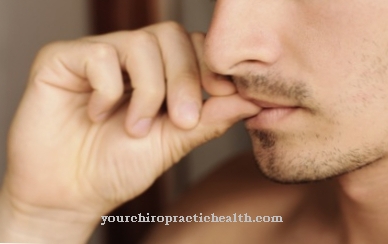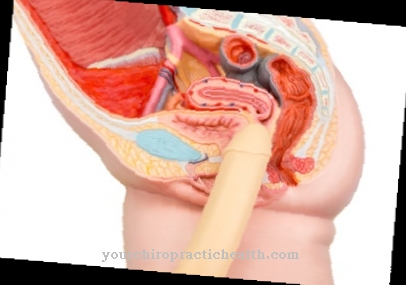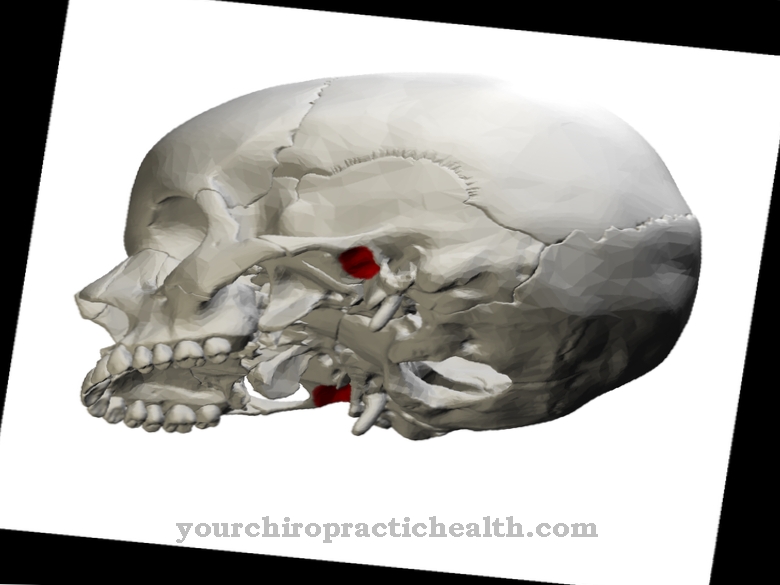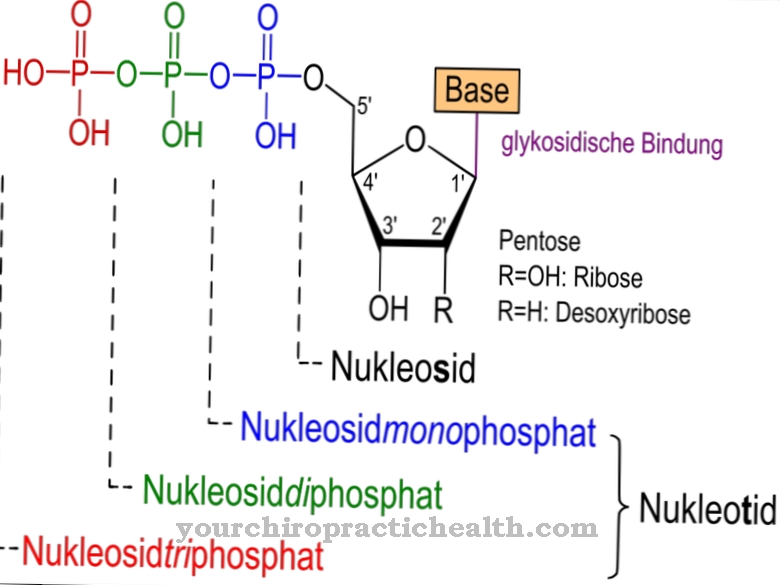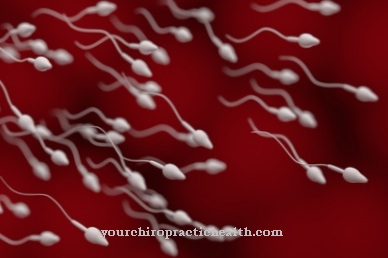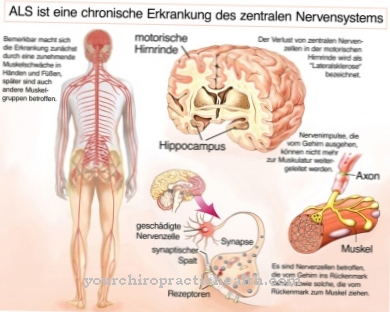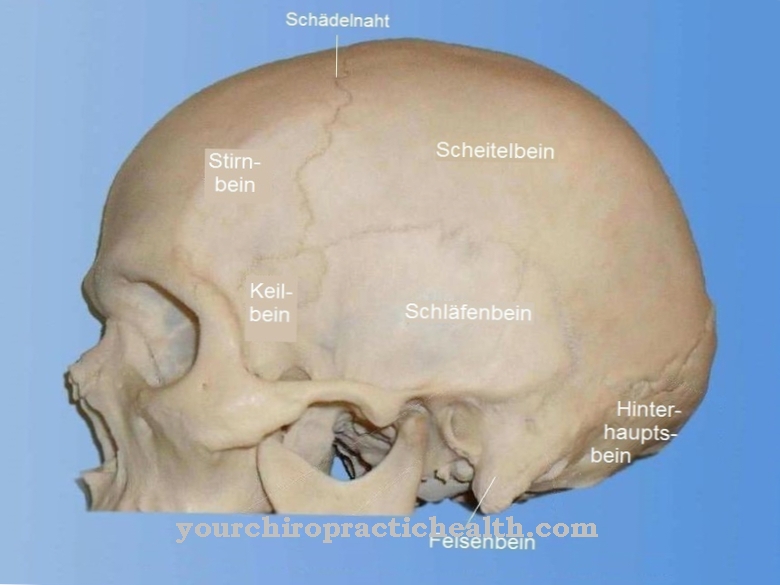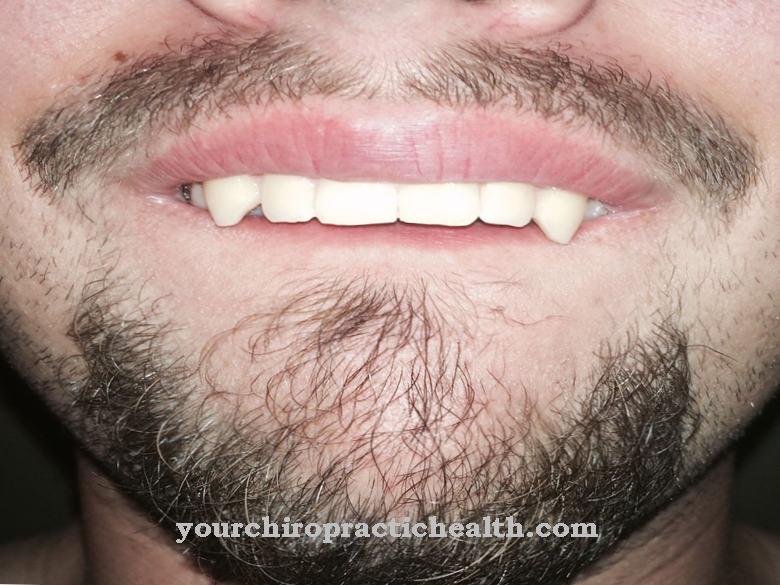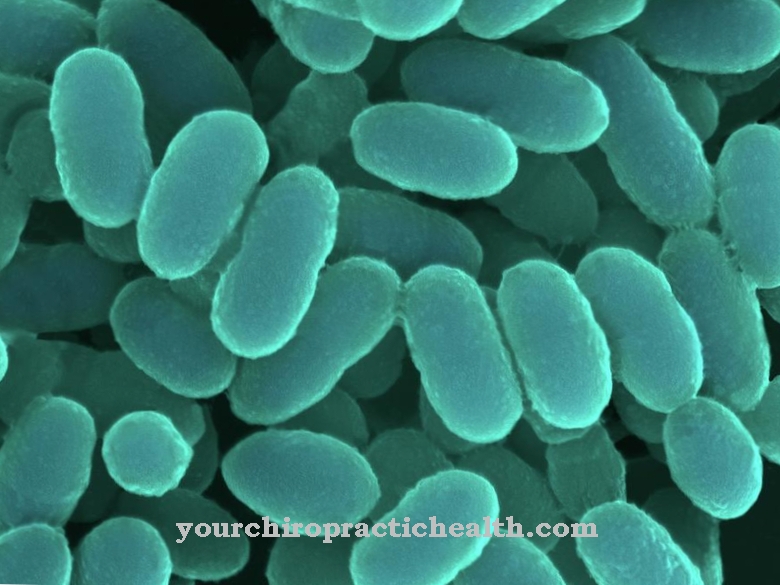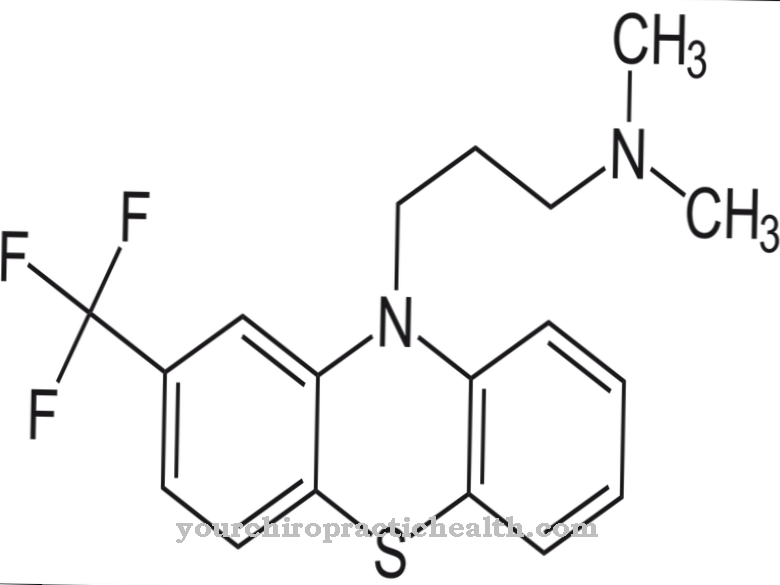As Nail dystrophy are degenerative growth changes on one, several or all of the fingernails or toenails. Nail dystrophies can have numerous local or systemic causes and are by no means limited to fungal infections. Damage that occurs temporarily is expressed as punctiform lesions or lesions running across the nail, while longitudinal grooves or runes develop if the causes persist.
What is nail dystrophy?

© muro - stock.adobe.com
Nail dystrophies are caused by growth disorders of the fingernails or toenails. The stunted growth can be temporary or permanent, which leads to different symptoms. Temporary disorders typically form punctiform lesions or transverse grooves that can be seen with the naked eye.
Persistent growth disturbances develop clearly visible longitudinal grooves in the nails, which gradually extend from the nail bed to the upper free edge of the nail. The possible extent of nail dystrophy, as well as its causes, covers a wide spectrum and ranges from harmless, only weakly visible symptoms to complete destruction of the nails.
The appearance of nail dystrophy usually provides an experienced doctor and dermatologist with initial clues about possible causes of the disease. In many cases, the lesions that appear on the nails are symptomatic of the presence of a certain disease syndrome, which also affects other organs.
In the case of a one-off, brief disorder, the locally limited change in the nail can be tracked for about three months because it takes up to three months to “push through” the locally limited lesion from the nail root to the upper free edge.
causes
Nail dystrophy can be caused by a multitude of causes, which can be summarized in a few cause complexes. The main cause complexes include mycoses or bacterial inflammation, skin diseases and certain types of tumors. But metabolic diseases with a systemic effect, side effects of medication as well as injuries and some rare hereditary diseases can promote nail dystrophy.
Malnutrition and local circulatory disorders can also cause symptomatic nail dystrophies. In the case of an infection with a nail fungus from the family of sprouts or filamentous fungi, there are usually conditions such as a weakened or suppressed immune system or systemic metabolic disorders that "allow" the almost ubiquitous and rather harmless fungus to become pathogenic.
Skin diseases that promote the development of nail dystrophy include eczema, psoriasis, various forms of non-contagious lichen planus (lichen planus) and a few other skin diseases. Chronic diseases of the lungs, the bronchi or the heart, which lead to a constant undersupply of oxygen, favor the formation of so-called watch glass nails.
They are large and rounded and are usually associated with widened terminal phalanges of the fingers.Among the drugs that can cause nail dystrophy as undesirable side effects are ACE inhibitors to lower arterial blood pressure, anticoagulants to prevent blood clots, special antibiotics and some other drugs.
Mechanical injuries to the nail bed through crushing or blows with blunt objects (hammer blows) usually lead to a visible blue-black hematoma (blue nail) below the nail sheet. The blue-black spot under the nail is partially absorbed and gradually migrates to the edge of the nail. If the nail bed is injured or the infection is more severe, the nail may peel off completely, which is known as onycholysis.
Diseases with this symptom
- Skin diseases
- Metabolic disorder
- eczema
- psoriasis
- Bruises
- Nail fungus
- Malnutrition
- Lichen planus
- Mycosis
- Hypoxia
- Inflammation of the nail bed
- tumor
- Circulatory disorders
- Hereditary diseases
- Lung disease
Diagnosis & course
A diagnosis can usually be made based on the appearance of nail dystrophy. In many cases the symptoms are not entirely clear, so that the diagnosis made must be confirmed or rejected by clarifying other parameters.
The clarifying examinations relate to blood tests or other laboratory tests. Particular caution is required if brownish vertical stripes appear, which can indicate a malignant tumor, for example a malignant melanoma under the nail bed.
The reliable interpretation of the diverse manifestations of nail dystrophy up to onycholysis, a detachment of the nail, requires specialist knowledge and as much experience as possible. The course of the disease is very different depending on the cause, growth disorders of the nail.
They range from self-healing to severe, especially if the nail abnormalities are due to serious metabolic disorders. In less serious cases, the nail bed and nail regenerate by themselves as soon as the cause of the impaired nail growth is identified and remedied.
Complications
Nail dystrophy or a degenerative change in a nail can have various causes and corresponding complications. In the worst cases, the nail can be completely destroyed, which can eventually peel off and fall off. The resulting wound can become infected and an inflammation develops.
This inflammation can spread systemically and lead to sepsis. Sepsis is often fatal and requires immediate medical treatment. A fungal disease on the nail can also spread systemically, especially if the body is immune. The nail fungus can also spread to other nails if left untreated and is therefore highly infectious.
If the infestation is severe, it can impair walking due to severe pain. In the context of systemic scleroderma, the nail can also be destroyed. This autoimmune disease can affect other organs in addition to the nails and thus lead, for example, to heart failure or kidney or lung failure.
Due to the strong involvement of the muscle and bone, patients can be severely impaired in movement. In addition, the disease can cause circulatory disorders, so that the corresponding tissues can develop ulcers or even die. This mainly happens in the area of the fingertips (Raynaud's syndrome) and less often on the arms and legs in the context of PAD.
When should you go to the doctor?
In the case of nail formation disorders such as nail dystrophy, a doctor should always be consulted. Medical clarification is necessary at the latest when the dystrophy is accompanied by injuries or inflammation of the nails. As soon as pain occurs or the brittle nails affect the general condition, this must be clarified by a doctor. The general rule is: Changes to the nails that cannot be traced back to a specific cause must be examined and treated if necessary.
Nail dystrophy can be the result of serious illnesses such as acrogeria, Darier's disease or poikiloderma and therefore always requires medical clarification. Longitudinal changes in the nail should be investigated promptly as they indicate a chronic disorder that may have already developed complications. Nail dystrophies in children and adolescents should be discussed with the pediatrician. Usually the symptoms are based on simple deficiency symptoms that can be reliably remedied by giving the appropriate vitamins or minerals. If a serious illness is the cause, rapid treatment improves the chances of recovery considerably.
Doctors & therapists in your area
Treatment & Therapy
Efficient treatment of nail dystrophy depends on the causative factors. It is often necessary not primarily to treat the disturbed nail growth, but only to aim at eliminating the causes. In simple cases, for example when a lack of vital substances necessary for the synthesis of the nails is found, it is sufficient to supply the body with the necessary substances.
In many cases, nail problems are due to improper treatment of the nails with nail polish, nail polish remover, or frequent contact with household chemicals and harsh detergents. These types of problems can be resolved with more appropriate treatment of the nails.
If mycoses or other infections are found, therapy can be limited to local treatment and control of the infectious agents. Sometimes it is combined with a systemically effective treatment. The therapy is much more challenging if the nail changes are associated with eczema or psoriasis.
In these cases, therapy is primarily aimed at the underlying disease. Therapy is also problematic in the presence of genetically determined metabolic disorders, which are severe in some cases, so that therapy must be aimed at alleviating the effects that arise from the metabolic disorder.
Outlook & forecast
In most cases with nail dystrophy, various malformations and disorders appear on the fingers and nails. The causes of nail dystrophy are very different, which is why the diagnosis of the disease is usually delayed.
In the worst case, the patient can suffer from severe or complete detachment and destruction of the nail. This not only leads to pain, but also to visual complaints, so that many sufferers from inferiority complexes and sometimes even from depressive moods.
If the nail dystrophy is triggered by a fungal disease, this disease can spread to the body and possibly affect other regions of the body. The muscles can also be damaged as a result, leading to disturbances in blood flow to the extremities.
If nail dystrophy occurs due to a lack of vitamins and other nutrients, the affected person must follow a strict diet. Likewise, nail polishes and other cosmetic items must often be avoided. Antibiotics are used for infections and inflammation. In most cases, nail dystrophy has a positive course of disease. This does not affect life expectancy.
prevention
One of the most important measures to prevent nail dystrophy is a healthy, varied diet that promotes an intact immune system and largely protects against mycoses and bacterial infections.
Avoiding improper treatment of the nails and protecting them from harsh household chemicals by using alternative cleaning agents or by wearing household gloves also helps prevent nail dystrophy.
You can do that yourself
Nail dystrophy is easy to self-treat with a number of home remedies and measures. Depending on the cause, it is often possible to remedy the problems with gentle treatment of the nails. Nail dystrophy as a result of malnutrition can be alleviated by supplying the necessary vitamins and minerals. If the symptoms are caused by an infection or eczema, a doctor should always be consulted.
At the same time, the nails must be spared. Nail protection products from the pharmacy can be used in consultation with the attending physician, as can various home remedies. Vinegar or tea tree oil help to disinfect the damaged nail and supply it with important nutrients. If there is a lack of fluorine, the affected nails can be treated with toothpaste. In the event of an infection, alcohol can be used for disinfection.
Nail dystrophy in the initial stage can be combated with your own urine or preparations with urea. Later, protection and the avoidance of harmful influences such as nicotine or environmental toxins are the means of choice. In addition, a medical book should be created so that the doctor can quickly clarify the causes of the nail dystrophy.



.jpg)

